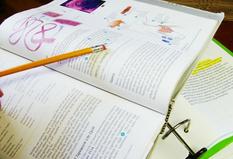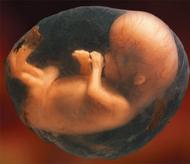 | ||||
Immunology: Innate Immunity
Review Questions
Virtual Microbiology Classroom of Science Prof Online
Innate Immunity Review Questions
These multiple choice and true/false questions are designed to help students practice and test their understanding of this topic.
SPO VIRTUAL CLASSROOMS
 | ||||||
4. Understand how leukocytes, nonspecific chemical defenses, inflammation and fever contribute to our second line of defense against pathogens.
5. What are the different types of leukocytes and their functions?
6. Which leukocytes are involved in the second line of defense?
7. Describe the three types of cells that kill extracellularly.
8. List and describe the nonspecific chemical defenses of the second line of immune defense.
9. Understand the steps of the inflammatory response.
1. What is microbial antagonism?
2. How does mucus help protect us from infection?
3. Describe the three types of formed elements.
These are review questions from the Virtual Microbiology Classrooms (8-week & 16-week), designed to help students better understand the history of microbiology. They are based on materials that can be found on the Immunology: Innate Immunity Lecture Main Page.
You have free access to a large collection of materials used in a college-level introductory microbiology course. The Virtual Microbiology Classroom provides a wide range of free educational resources including PowerPoint Lectures, Study Guides, Review Questions and Practice Test Questions.
Page last updated: 2/2016
SCIENCE VIDEOS
10. Describe the relationship between Gram-negative bacteria and fever.
11. Describe three characteristics of the epidermis that make it an intolerable environment for most microorganisms.
12. Describe the physical components of the nonspecific 1st line of immune defense.
13. Describe the chemical components of the nonspecific 1st line of immune defense.
14. How does the 1st line differ from the 2nd line of immune defense? (Make sure to give a detailed response that states basically what both line of defense do.)
15. Describe each of the nonspecific chemical defenses of the 2nd line of immune defense.
16. Describe the cellular components of the nonspecific 2nd line of immune defense.
17. Name and differentiate between the different types of granulocytes and agranulocytes.
18. Describe the major events in the inflammatory response including the stimuli, physiologic reactions and symptoms.
19. Describe the events that give rise to macrophages.
20. What is phagocytosis and how is it involved in our body defending us from pathogens.
21. How is fever involved in immunology? If a fever gets too high, why is that dangerous? (I need an answer in terms of the specifics of what fever does to the immune system and what high fever can do to the cells of the body).
22. Describe how infection with Gram-negative bacteria triggers fever, and why using anti-prostaglandin medication temporarily reduces fever?
23. How does the presence of normal flora bacteria discourage pathogens from becoming established?





